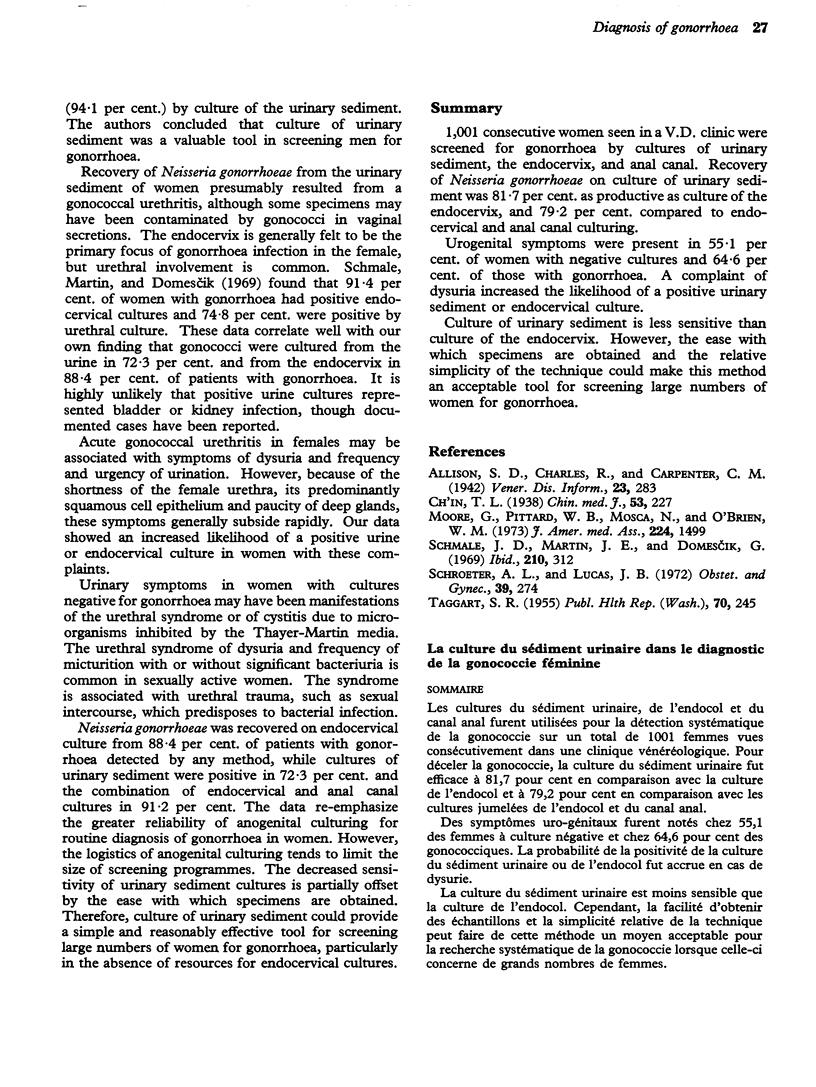Abstract
1,001 consecutive women seen in a V.D. clinic were screened for gonorrhoea by cultures of urinary sediment, the endocervix, and anal canal. Recovery of Neisseria gonorrhoeae on culture of urinary sediment was 81-7 per cent. as productive as culture of the endocervix, and 79-2 per cent. compared to endocervical and anal canal culturing. Urogenital symptoms were present in 55-1 per cent. of women with negative cultures and 64-6 per cent. of those with gonorrhoea. A complaint of dysuria increased the likelihood of a positive urinary sediment or endocervical culture. Culture of urinary sediment is less sensitive than culture of the endocervix. However, the ease with which specimens are obtained and the relative simplicity of the technique could make this method an acceptable tool for screening large numbers of women for gonorrhoea.
Full text
PDF


Selected References
These references are in PubMed. This may not be the complete list of references from this article.
- Moore G., Pittard W. B., 3rd, Mosca N., O'Brien W. M. Gonorrhea detection by urine sediment culture. JAMA. 1973 Jun 11;224(11):1499–1501. [PubMed] [Google Scholar]
- Schmale J. D., Martin J. E., Jr, Domescik G. Observations on the culture diagnosis of gonorrhea in women. JAMA. 1969 Oct 13;210(2):312–314. [PubMed] [Google Scholar]
- Schroeter A. L., Lucas J. B. Gonorrhea--diagnosis and treatment. Obstet Gynecol. 1972 Feb;39(2):274–285. [PubMed] [Google Scholar]
- TAGGART S. R. Gonorrhea detection by urine examination. Public Health Rep. 1955 Mar;70(3):245–247. [PMC free article] [PubMed] [Google Scholar]


